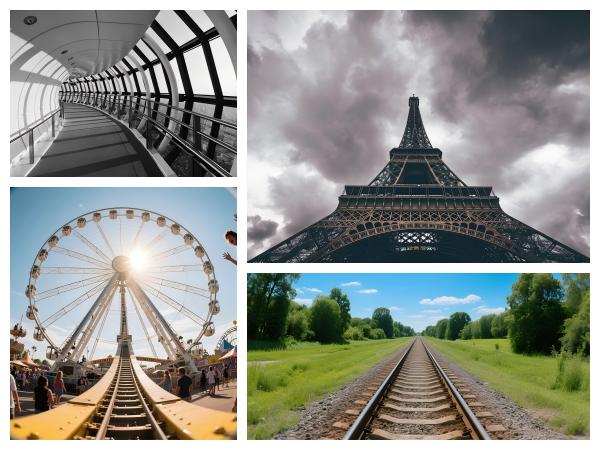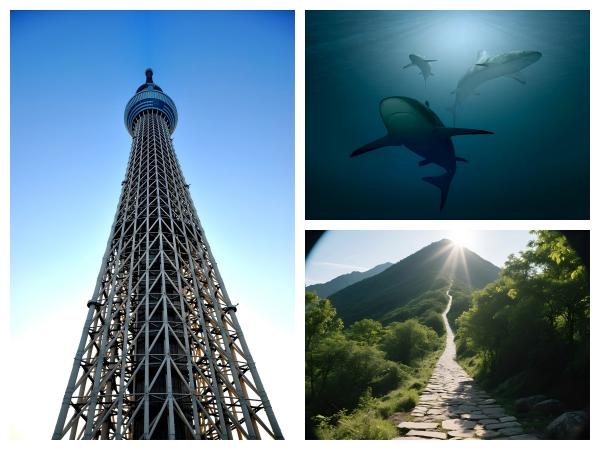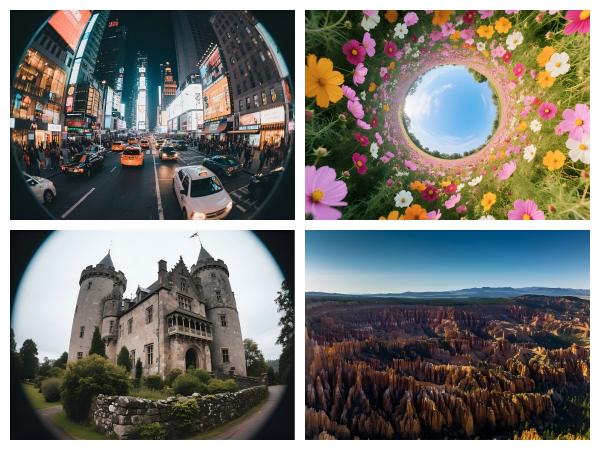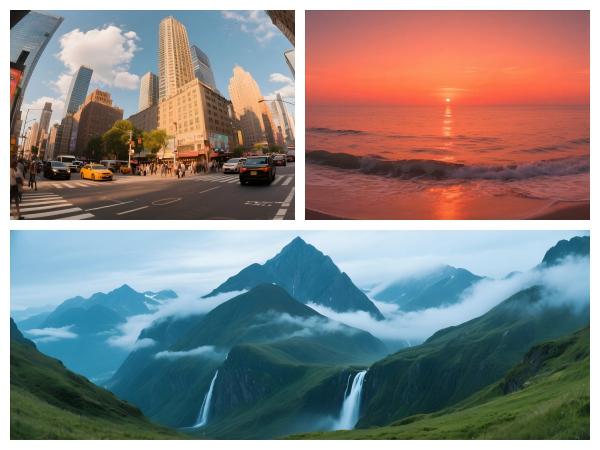Fisheye lens is a special lens with a very wide viewing angle, which can produce strong distortion effect and create a very visually impactful picture. However, due to its special optical properties, the composition of fisheye lens is also very challenging and requires breaking conventional thinking.
Here are some composition tips when shooting with fisheye lens:
1.Using central symmetry
Fisheye lenses produce strong barrel distortion, and placing the subject in the center of the frame can effectively reduce the effect of distortion on the subject, while using the symmetry of the lens to enhance the sense of balance in the picture.
When shooting, you can enhance symmetry by looking for subjects with symmetrical shapes (such as buildings, bridges, flowers, etc.) and place them in the center of the lens to create a striking symmetrical composition.
2.Use lines to guide the eye
Fisheye lenses can “bend straight lines into arcs”. Making good use of lines can guide the audience’s line of sight and enhance the rhythm of the picture.
For example, straight lines such as roads, bridges, railings, and coastlines will become arcs converging to the center under the fisheye lens, forming a “vortex” or “tunnel” effect. When composing, you can let the lines extend from the edge of the picture to the center, guiding the line of sight to focus on the central subject (such as pedestrians at the end of the road).
Fisheye lenses can use lines to guide the line of sight composition
3.Smart use of close-up shots
Fisheye lenses are great for close-up shots because they can capture a wide field of view, and shooting close to your subject can make it stand out and create a sense of depth in the frame.
4.Control light
Fisheye lenses can easily capture the changes and reflections of surrounding light. Therefore, when shooting, pay attention to the direction and intensity of light, avoid overexposure or darkening, and use the difference in light to enhance the picture effect.
Pay attention to controlling light when composing with a fisheye lens
5.Emphasize near and far views
The wide-angle field of view of the fisheye lens allows both the near and far views to be presented in the picture at the same time. The foreground added in this way can enrich the picture layers and avoid the picture being empty.
When shooting, try to place close-up objects in the foreground, and use the far view elements to enhance the depth of field effect and create a rich sense of layers. For example, when shooting outdoor portraits, use flowers as the foreground close to the lens, the characters are in the middle ground, and the sky in the background forms an arc with clear layers.
6.Fill the screen
The fisheye lens has a very wide viewing angle, which can easily make the picture look empty. By filling the picture, you can add visual elements and enrich the picture content. For example, when shooting a landscape, you can include the sky, mountains, lakes and other elements in the picture to make the picture full of details.
Fisheye lens composition should fill the frame
7.Use low-angle shots
Shooting at a low angle can enhance the perspective of the picture, and at the same time, the wide-angle characteristics of the fisheye lens can be used to include the ground and the sky at the same time, creating a unique perspective.
For example, when shooting a city street scene, the lens is close to the ground, and the pedestrians and vehicles on the street and the tall buildings in the distance are photographed, so that the lines on the ground and the clouds in the sky form a contrast, enhancing the three-dimensional sense of the picture.
8.Panoramic shooting
The wide-angle feature of the fisheye lens is very suitable for taking panoramic photos, which can include more scenes in the picture. When shooting vast scenes such as mountains and seas, the fisheye lens can include the entire scene in the picture at once, avoiding the trouble of stitching ordinary lenses.
For example, when shooting a panoramic view of a mountain range, the fisheye lens can include the entire mountain range and the clouds in the sky in the picture, showing the magnificent natural scenery.
Fisheye lenses are suitable for taking panoramic images
9.Creative composition
The “unconventional” characteristics of fisheye lenses are suitable for trying some creative methods. Its distortion characteristics can create unique creative effects.
For example, when shooting creative portraits, you can place the person at the edge of the picture, so that the arms or legs are stretched, creating a surreal effect. For example, when shooting a dancer, place the dancer’s body at the edge of the picture to make the dance posture more agile under distortion.
Final Thoughts:
If you are interested in purchasing various types of lenses for surveillance, scanning, drones, smart home, or any other use, we have what you need. Contact us today to learn more about our lenses and other accessories.
Post time: Aug-05-2025







